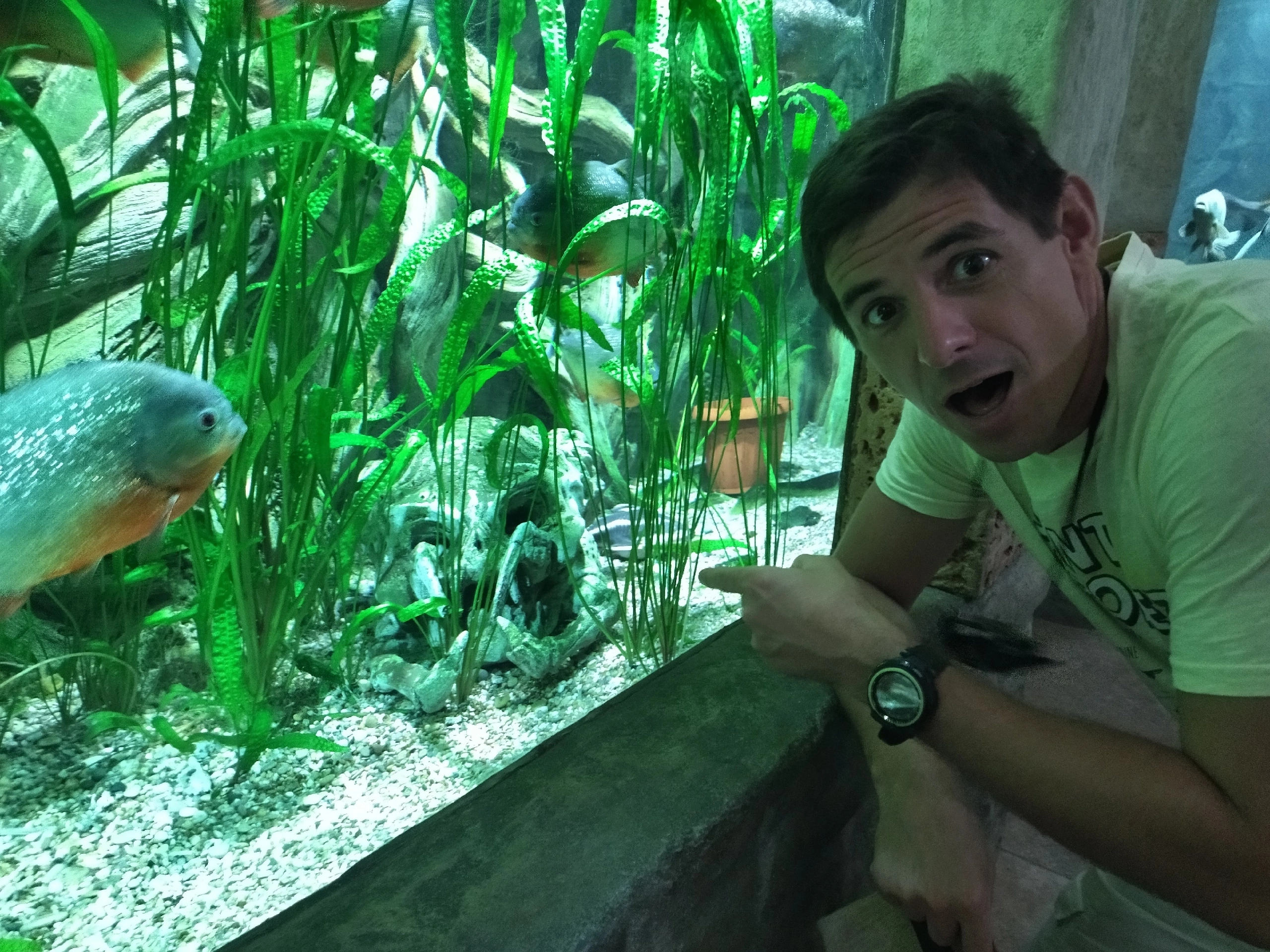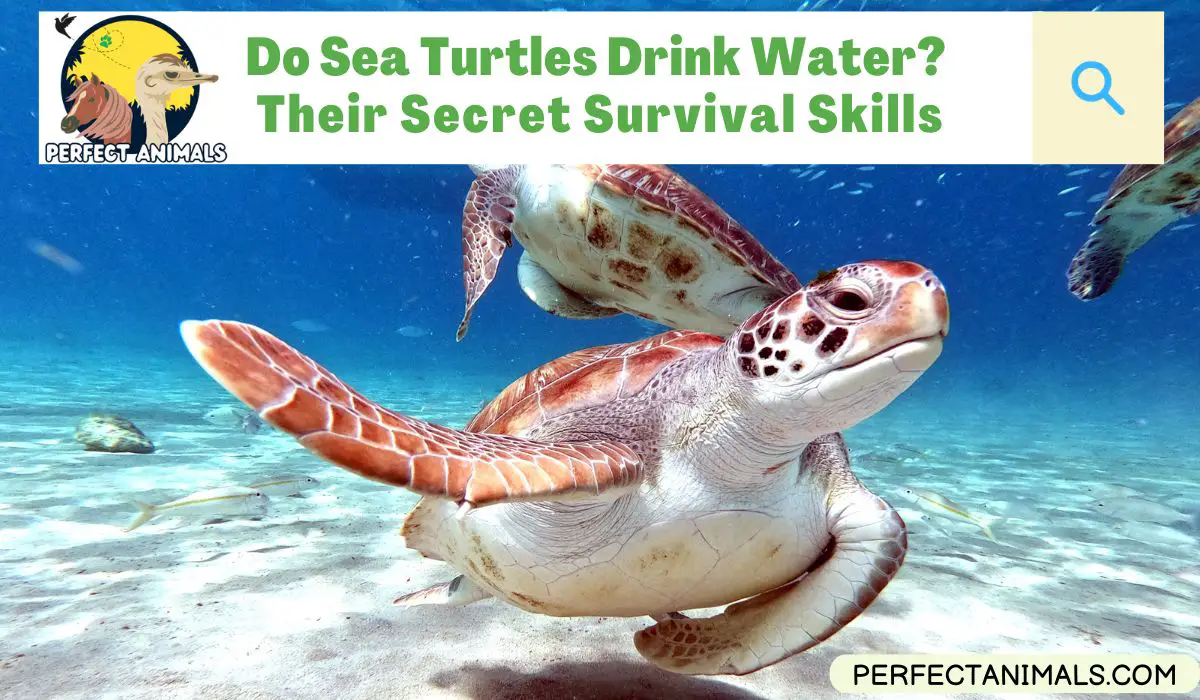Sea turtles spend most of their lives swimming in the ocean, surrounded by saltwater.
Yet they still need freshwater to survive, just like humans and other animals do.
So how do sea turtles get the water they need to stay hydrated? Do they actually drink seawater?
Let’s dive in and explore how sea turtles get their freshwater fix.
In this article, we’ll look at whether sea turtles drink water, how they drink and obtain fresh water, how often they need to drink, and whether turtles can become dehydrated.
We’ll also discuss whether sea turtles swallow water when eating. By the end, you’ll understand exactly how these amazing ocean reptiles get the fresh water they need to thrive.
Do Sea Turtles Drink Water?
When we think of sea turtles, we imagine them swimming gracefully through the ocean. So it may seem odd to wonder whether sea turtles actually drink water like land animals.
Sea turtles do in fact drink water, even though they live in the ocean.
But they don’t drink the salty seawater they swim in. Like all animals, sea turtles need fresh water to survive.
Sea turtles have special glands that allow them to process salt. These glands eliminate excess salt from the water they ingest. This lets them drink seawater and filter out the salt.
But sea turtles still don’t actually drink ocean water. They obtain freshwater in other ways, which we’ll cover next.
The key point is that while sea turtles are adapted to the ocean, they do still need fresh water just like land tortoises and turtles do.
So sea turtles do in fact drink water – they just don’t drink the surrounding seawater!
Related Article – Do Turtles Have Teeth?
How Do Sea Turtles Drink Water?
Sea turtles have developed some clever techniques for getting freshwater without drinking salty ocean water directly.
One method is drinking seawater and then expelling the excess salt.
Sea turtles have special glands near their eyes called salt glands.
When they drink seawater, the salt enters the bloodstream and is transported to these glands.
The glands concentrate the salt into a solution about twice as salty as seawater, which the turtle excretes as “tears” from the corners of its eyes.
This effectively filters out the salt, leaving about half of the original seawater ingestion as freshwater the turtle can use.
Sea turtles are actually the most efficient ocean animals at extracting freshwater this way. Other marine life like seabirds, sharks, and rays also have salt glands, but none are as adept as sea turtles.
Sea turtles also get fresh water from rain showers. They’ll lift their heads out of the water and open their mouths to catch falling raindrops.
And they’ll swim in freshwater pools that form on beaches after rainfall.
Some turtles even locate freshwater seeps along rocky coasts and position themselves to drink the emerging freshwater.
Additionally, sea turtles get hydration from the food they eat. Many marine plants and animals have a high water content, which provides fluids.
So with their specialized salt glands and other adaptive behaviors, sea turtles have creative ways to get the freshwater they need from their salty ocean home.
Their ability to gain water in the open seas is quite impressive.
Related Article – Turtles Without Shells
How Often Do Turtles Drink Water?
The frequency with which sea turtles need to drink fresh water varies based on factors like their size, diet, activity levels, and ambient temperature.
Smaller sea turtles or those eating drier food may need to drink more often than larger turtles eating more hydrating plants.
Nesting female sea turtles also require more frequent hydration.
In general, adult sea turtles likely need to drink fresh water just a few times per week.
They are adept at retaining fluids and obtaining water from their food.
Baby sea turtles drink more often when growing rapidly. During especially hot weather or drought conditions, sea turtles may drink more frequently as well.
Sea turtles don’t have easy access to freshwater like we do from taps and fountains.
So they’ve adapted to thrive on sporadic drinking that happens opportunistically when it rains or when they encounter seeps and pools while ranging offshore.
By making the most of these freshwater sources, sea turtles can fulfill their fluid needs even while spending months at a time in the open ocean.
You May Also Like – Do Fish Blink? Fact or Fiction?
Can Sea Turtles Get Dehydrated?
Given that sea turtles live in water but can’t drink the surrounding seawater, dehydration is a real risk they face.
However, sea turtles have adaptations that help them avoid dangerous dehydration, even while living in salty oceans.
Sea turtles are able to retain fresh water efficiently in their bodies. They can store water in their bladder, and their kidneys are able to concentrate urine so they don’t lose too much fluid.
Their ability to extract fresh water from seawater using salt glands also helps sea turtles stay hydrated.
That said, sea turtles still face threats of dehydration in certain conditions.
Young sea turtles are vulnerable to dehydration since their bodies cannot store as much water. Nesting female sea turtles also risk dehydration when hauling out onto beaches, especially if they nest repeatedly.
Hot weather and droughts can also raise dehydration risks by evaporating freshwater sources.
Signs of dehydration in sea turtles include sunken eyes, wrinkled skin, inactivity, and excretion of uric acid instead of urine.
Severely dehydrated turtles may become too weak to swim and can die.
You May Also Like – Can Sharks See in the Dark?
Do Sea Turtles Swallow Water When They Eat?
As we’ve covered, sea turtles have adaptations to get the freshwater they need from their ocean environment.
One way is by extracting water from their food, as we explained earlier. But do sea turtles consciously swallow water as they’re eating their prey?
When sea turtles are feeding, they typically are focused on capturing and swallowing their target prey.
This could include jellyfish, seagrass, crabs, shrimp, snails, and other marine animals and plants.
Their feeding behavior is centered around consuming this food, not intentionally drinking water.
However, because many of their food sources have a high fluid content, sea turtles ingest a large amount of water as they swallow their prey.
Jellyfish and seagrass, for example, are made up mostly of water. So sea turtles get hydrated by the water inside the tissues of these foods.
While sea turtles likely don’t deliberately gulp down mouthfuls of water as they eat, their food choices provide hydration naturally.
Final Thoughts
Sea turtles live surrounded by ocean water, yet they still require fresh water to stay hydrated, just like land turtles and other animals.
As we’ve explored, sea turtles have some clever adaptations that allow them to obtain the fresh water they need.
By drinking seawater then excreting excess salt from special glands, catching rainwater, locating freshwater seeps, and extracting water from their food, sea turtles can gain the fluids they need to survive in the salty seas.
While dehydration is still a threat, especially for babies and nesting females, healthy sea turtles are well-equipped to acquire fresh water in their ocean environment.
FAQs
What do sea turtles drink?
Sea turtles drink freshwater, not saltwater. They obtain this by drinking rainfall, eating hydrating foods, and drinking from freshwater pools and seeps.
Why do sea turtles cry?
Sea turtles “cry” to get rid of excess salt from their bodies after drinking seawater.
Their tear-like secretions are actually concentrated salt solutions being excreted from special glands near their eyes.
This helps them maintain fluid balance.
How do sea turtles get fresh water to drink?
Sea turtles get freshwater by catching rain showers, locating freshwater seeps along coasts, drinking from temporary freshwater pools on beaches, and extracting water from their food like jellyfish and seagrass.
Resources – (for further reading)
The Company of Biologists – Salt Gland Function in the Green Sea Turtle Chelonia Mydas
The Conversation – Curious Kids: how do sea creatures drink sea water and not get sick?
JSTOR – Salt Gland Function in the Leatherback Sea Turtle, Dermochelys coriacea

Jamie has a rich understanding of marine life, garnered through extensive study and hands-on experience with various marine organisms. He has actively participated in marine education programs, broadening public understanding of the ocean’s intricate ecosystems.

